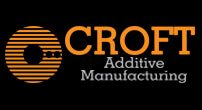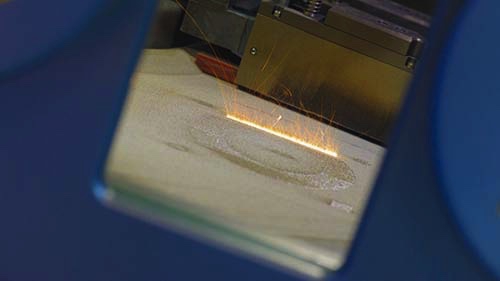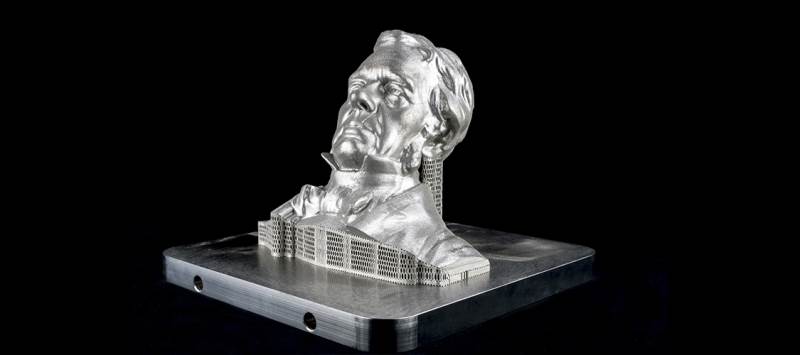- Contact 0870 350 7767
- |
- Advertise
Home > Croft Additive Manufacturing > Case Study - Croft Teams Up With Esr For Space Mission
Case Study - Croft Teams Up With Esr For Space Mission
 News and PR from Croft Additive Manufacturing - Published 29 November 2016
Specialist manufacturer, Croft Additive Manufacturing (CAM), and ESR Space have combined expertise...
News and PR from Croft Additive Manufacturing - Published 29 November 2016
Specialist manufacturer, Croft Additive Manufacturing (CAM), and ESR Space have combined expertise...
Specialist manufacturer, Croft Additive Manufacturing (CAM), and ESR Space have combined expertise to conduct a study into the use of additive manufacturing (AM) and use prototypes to develop bespoke spacecraft mechanisms.
The research, which was funded by Centre for Earth Observation Instrumentation and Space Technology CEOI-ST, aimed to exploit recent developments in manufacturing technology and create innovative, high-performance components for use in demanding mechanism applications.
While the main emphasis of the study was on spacecraft applications, it also supported the development of supply chain capability in AM and the suitability of such processes in a range of markets, including telecommunications, science and robotics.
Grant Munro, project manager at ESR Space, explained the partnership selection processes: ÂDuring early discussions with Croft, we identified a number of synergies in the key skills it has developed as a business. It was an obvious choice to harness the process developments in this programme of work since Croft is well aligned with the technical objectives set out at the start of the programme.Â
In space applications, there are a number of disadvantages to using a liquid or grease-based lubricant, such as low temperature viscosity, evaporation, loss of lubricant and contamination of other parts of the spacecraft.
To address these issues, two concept designs were developed using CroftÂs Realiser SLM-250 machine. These were both focused on managing the lubricant within the bearing system more effectively, with a particular emphasis on the challenges of the space environment.
Neil Burns, director at Croft Additive Manufacturing, said: ÂIt is always advised to have several options when seeking to identify a bespoke solution using innovative technologies. Following the creation and analysis of the two prototypes in this instance, it was deemed more valuable to develop the lubricant retaining cage further.Â
Grant continued: ÂWe learnt a number of valuable lessons during this study, the most important of which was in the design process  while AM technology can give greater design freedom relative to conventional machining, it is not without constraints. In terms of next steps, a roadmap has been created to show timescales for exploitation within the space industry and beyond.Â
Neil concluded: ÂAll in all, this programme has been a huge success and has delivered a number of promising technologies for further development. It has opened doors for us to work in collaboration with a new partner and introduce them to the potential of additive manufacturing, something that weÂre always working towards at Croft.Â
While it is likely that the component developed will be initially used for spacecraft applications alone, the use of the technology in other industries such as nuclear, aerospace and medical will be explored in parallel.
The research, which was funded by Centre for Earth Observation Instrumentation and Space Technology CEOI-ST, aimed to exploit recent developments in manufacturing technology and create innovative, high-performance components for use in demanding mechanism applications.
While the main emphasis of the study was on spacecraft applications, it also supported the development of supply chain capability in AM and the suitability of such processes in a range of markets, including telecommunications, science and robotics.
Grant Munro, project manager at ESR Space, explained the partnership selection processes: ÂDuring early discussions with Croft, we identified a number of synergies in the key skills it has developed as a business. It was an obvious choice to harness the process developments in this programme of work since Croft is well aligned with the technical objectives set out at the start of the programme.Â
In space applications, there are a number of disadvantages to using a liquid or grease-based lubricant, such as low temperature viscosity, evaporation, loss of lubricant and contamination of other parts of the spacecraft.
To address these issues, two concept designs were developed using CroftÂs Realiser SLM-250 machine. These were both focused on managing the lubricant within the bearing system more effectively, with a particular emphasis on the challenges of the space environment.
Neil Burns, director at Croft Additive Manufacturing, said: ÂIt is always advised to have several options when seeking to identify a bespoke solution using innovative technologies. Following the creation and analysis of the two prototypes in this instance, it was deemed more valuable to develop the lubricant retaining cage further.Â
Grant continued: ÂWe learnt a number of valuable lessons during this study, the most important of which was in the design process  while AM technology can give greater design freedom relative to conventional machining, it is not without constraints. In terms of next steps, a roadmap has been created to show timescales for exploitation within the space industry and beyond.Â
Neil concluded: ÂAll in all, this programme has been a huge success and has delivered a number of promising technologies for further development. It has opened doors for us to work in collaboration with a new partner and introduce them to the potential of additive manufacturing, something that weÂre always working towards at Croft.Â
While it is likely that the component developed will be initially used for spacecraft applications alone, the use of the technology in other industries such as nuclear, aerospace and medical will be explored in parallel.
Other announcements from Croft Additive Manufacturing
-
Think Additive Manufacturing is too expensive to invest in? Think again...
Additive manufacturing or 3D printing is one of the most exciting innovations in the production world.
11 Apr 2019
-
Predictions in 3D Printing Whats Next for 2019
According to Statista, the value of the additive manufacturing or 3D printing sector will reach $20.5 billion by 2020.
11 Apr 2019
-
-
New Additive Manufacturing Training Workshop
New dates now available for Croft's metal 3Dprinting workshop that aims to 'Spill the Beans' on Additive Manufacturing. This workshop is from an industry perspective and moves away from academia.
23 May 2018







